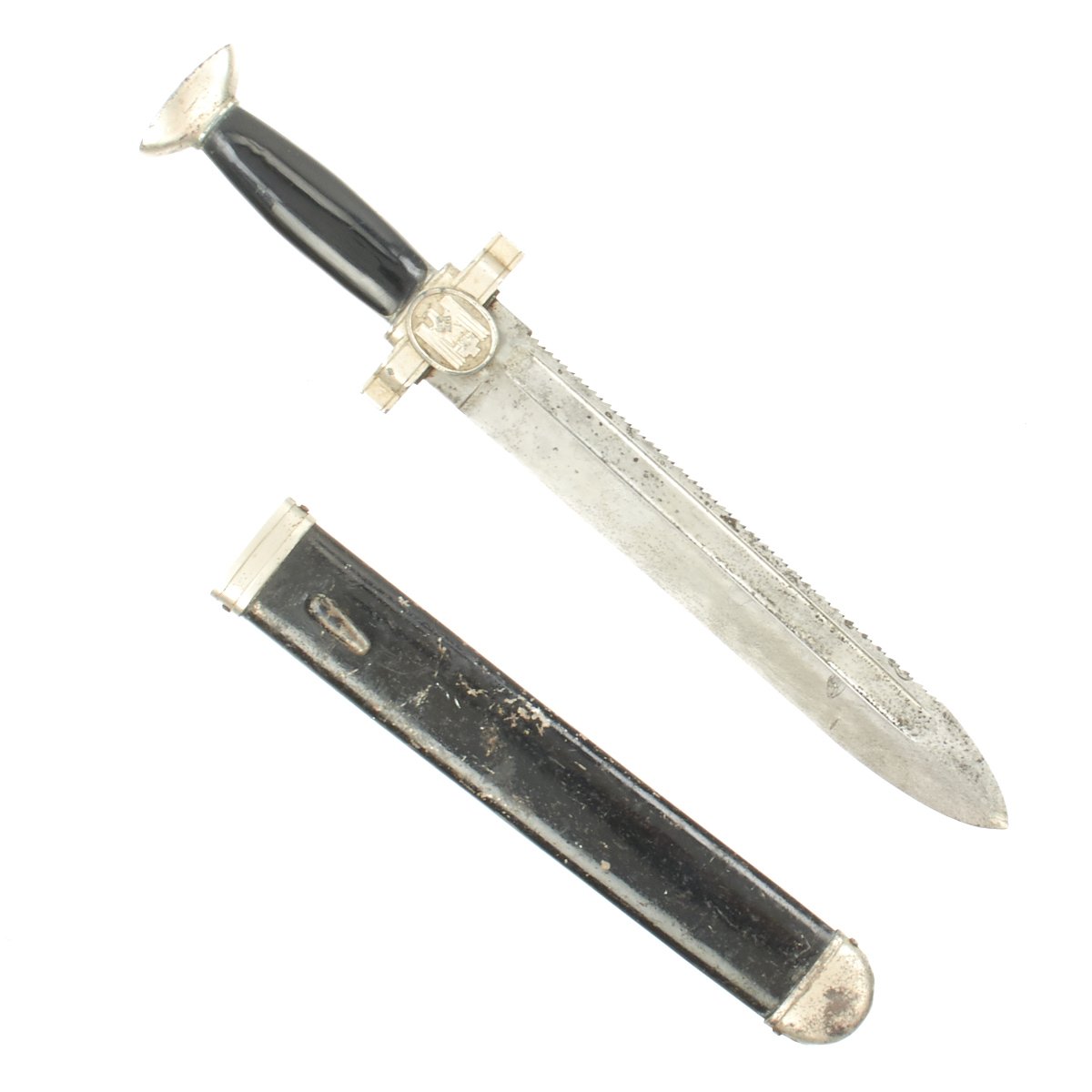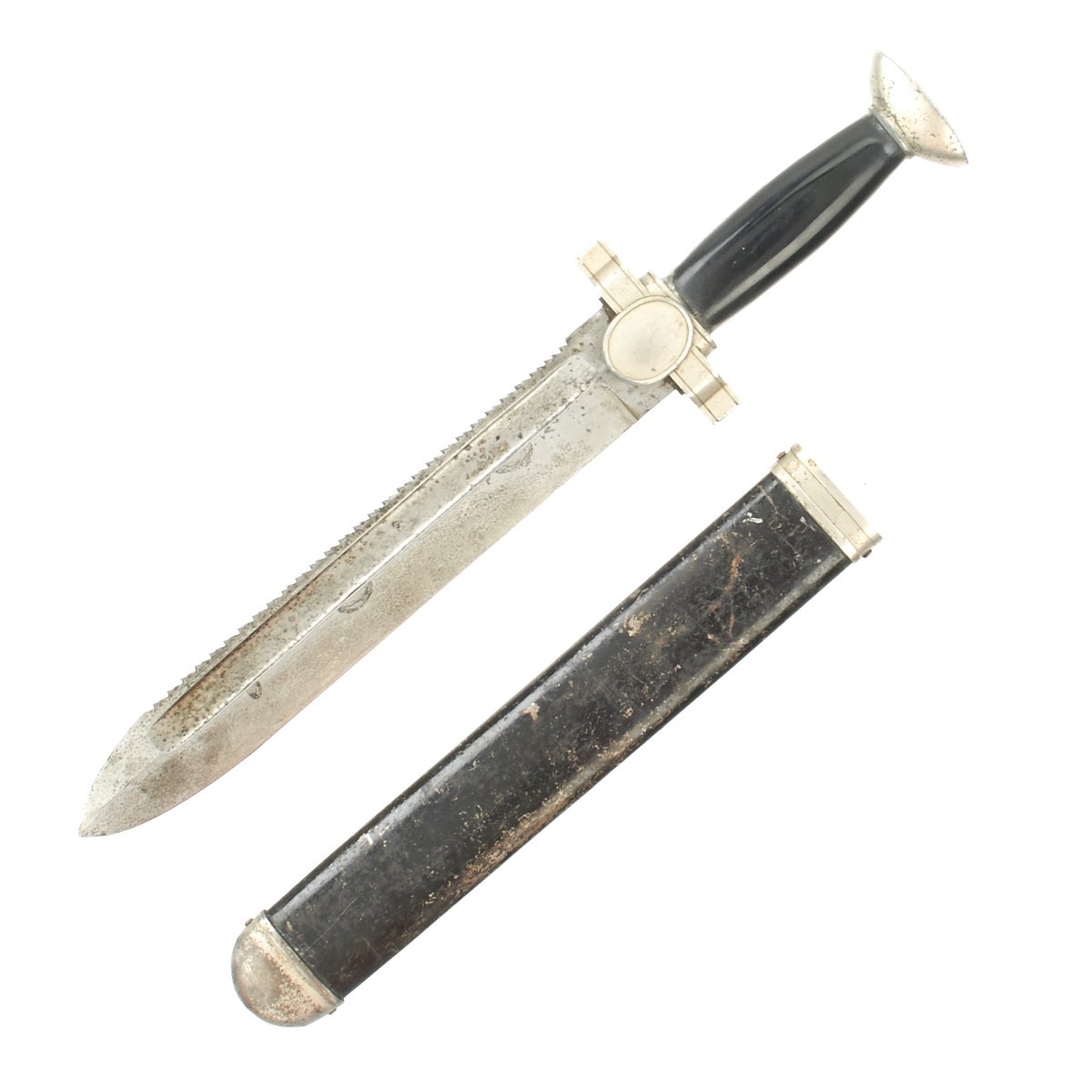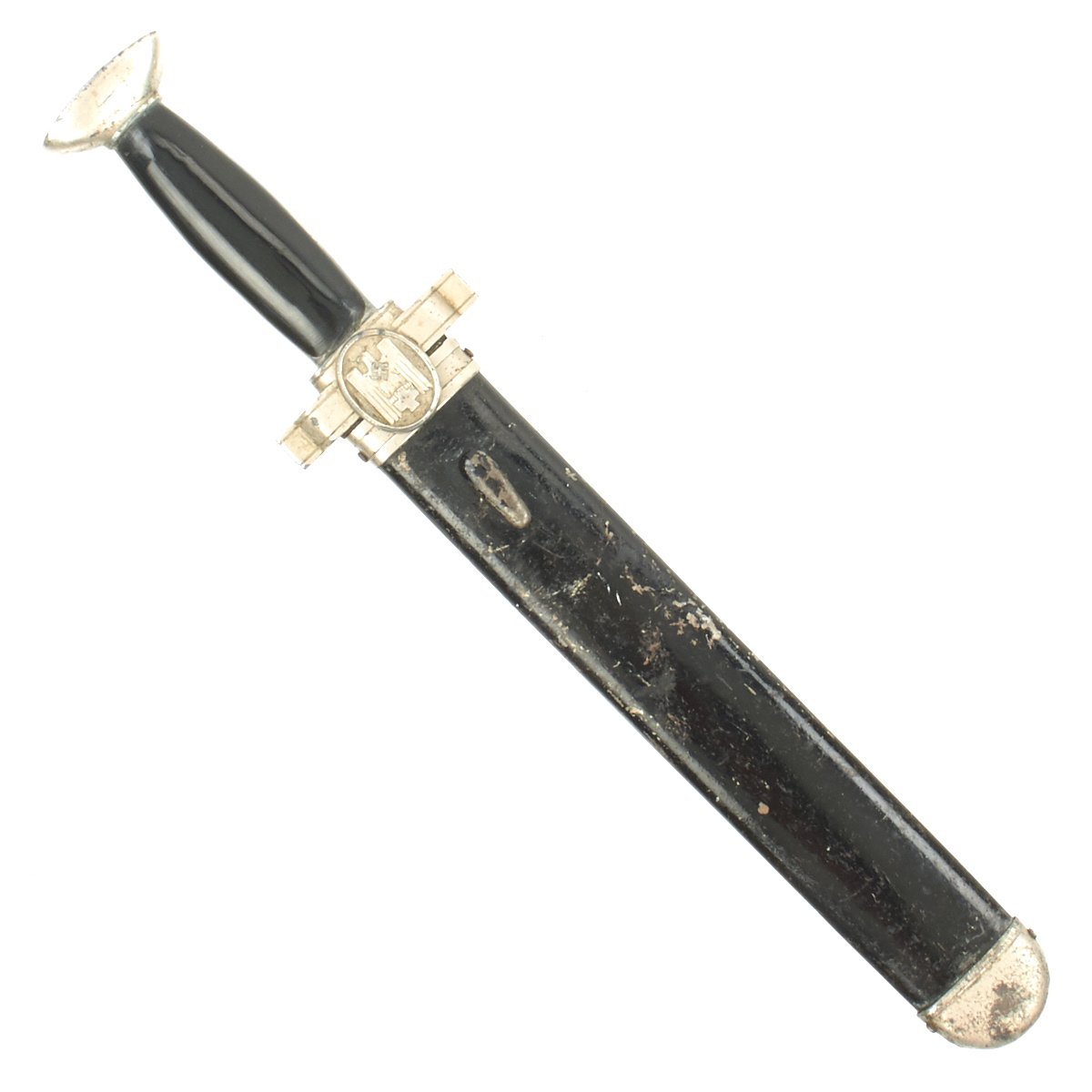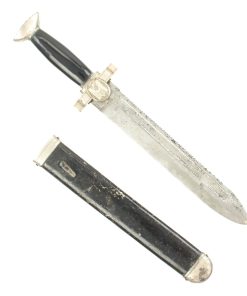Original German WWII DRK Red Cross EM/NCO Hewer with Rare Spear Point Tip – Deutsches Rotes Kreuz Original Items
$ 450,00 $ 135,00
Original Item: Only One Available. This is a nice example of the German Red Cross (DRK) Enlisted Man / Non-Commissioned Officer Hewer, with a rare “spear-point” blade. The usual type seen has a flat tip, as medics were supposed to only use them for defense.
The hilt mounts have around 60% of the original nickel-plating still intact, with the worn areas showing the base pot metal. Very often the plating did not hold up well on these hewers, as can be seen. Most of the wear is around the grip area, and the pommel retains much plating.
The crossguard features an oval boss on each side, with the obverse featuring an eagle with half-opened wings and a raised out mobile swas on his breast. The bird clutches a cross in his talons. The grip plates are smooth bakelite, and on this version of the hewer, the bakelite was molded directly onto the handle, so there are no retaining screws. The crossguard also still has the original leather buffer washer around the blade.
The scabbard is in good used condition, and definitely does show its age. It does not have dents we can see, but the lacquer is definitely chipped and missing in places, and shows quite a bit of crazing and checking due to age. The nickel plated steel fittings are still present, each retained by two screws. The plating has worn off on the better part of the drag, and the underlying steel has oxidized a bit.
The blade of this hewer is the classic saw back type but instead of the characteristic blunted tip it has a spear point tip. This variation is claimed by some to be a post war USGI conversion, however the blade measures a full 10.5 inches, which would be impossible with the blunted blade. The saw back is intact and sharp, as used to cut splints and make stretchers in the field.
If you have been looking for a rare Red Cross hewer you just found it!
History of the German Red Cross (DRK)
The DRK, “Deutsches Rotes Kreuz” (German Red Cross), a voluntary civil assistance organization originally instituted in 1864, was officially acknowledged by the Geneva Convention in 1929. In December 1937 it gained status as a legally recognized organization by the NSDAP. As with other essential services in Third Reich Germany, it came under control of the NSDAP in late 1938 under the auspices of the Ministry of the Interior’s Social Welfare Organization.
Fast Shipping with Professional Packaging
Thanks to our longstanding association with UPS FedEx DHL, and other major international carriers, we are able to provide a range of shipping options. Our warehouse staff is expertly trained and will wrap your products according to our exact and precise specifications. Prior to shipping, your goods will be thoroughly examined and securely secured. We ship to thousands clients each day across multiple countries. This shows how we're dedicated to be the largest retailer on the internet. Warehouses and distribution centres can be located throughout Europe as well as the USA.
Note: Orders with more than one item will be assigned a processing date depending on the item.
Before shipping before shipping, we'll conduct a thorough inspection of the items you have ordered. Today, the majority of orders will be delivered within 48 hours. The delivery time will be between 3-7 days.
Returns
The stock is dynamic and we cannot completely manage it because multiple stakeholders are involved, including our factory and warehouse. So the actual stock may alter at any time. It's possible that you may not receive your order once the order has been made.
Our policy is valid for a period of 30 days. If you don't receive the product within 30 days, we are not able to issue a refund or an exchange.
You can only return an item if it is unused and in the same state as the day you received it. You must have the item in its original packaging.
Related products
Uncategorized
Uncategorized
Uncategorized
Uncategorized
Armored Burgonet Helmet & Polearm from Scottish Castle Leith Hall Circa 1700 Original Items
Uncategorized
Uncategorized
Uncategorized
Uncategorized
Uncategorized
Uncategorized
Uncategorized
Uncategorized
Uncategorized
Uncategorized
Uncategorized
Uncategorized
Uncategorized
Armoured Fighting Vehicles of the World: AFVs of World War One (Hardcover Book) New Made Items












































































